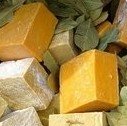Free range sheep and orphan lambs
by Bill
(Normandie, France)
I farm in Normandy France where the weather is wet and windy most of the time (and temperatures can be negative). Most of our lambs arrive early in the year which isn't a bad thing as the weather here in spring can be worst.
I agree with most of the advice contained in your article.
Over the years I have tried most of the methods you mention to reunite the lamb with its mother. The success rate is low, it isn't always the ewes' fault, sometimes you get a lamb that will not suckle despite all your efforts.
An orphan lamb will completely disrupt your work schedule, will cost you sleep and is a venture totally uneconomic (after 12 weeks of feeding, you will have used more than 20 kgs of ewes milk replacer).
So why do I do it? You save a life and you will have a ewe that is confident in you and can bring calmness to your flock.
It is necessary to make a distinction between free range sheep and housed sheep. With daytime births you will probably be aware of the time when the lamb was born and abandoned.
However, with night time births and abandonment this could have occurred more than 12 hours before you discover the lamb. You should assume the worst - the lamb probably hasn't received colostrum and may be suffering from Hypothermia.
When you discover an abandoned lamb in the open you should also take a few minutes to look for the after birth (placenta) as this can give an indication as to whether this was a single or multiple birth.
The rule of thumb is a large placenta = large single lamb or multiple birth. Walk the field, new born lambs can be difficult to see on a large open terrain.
You may not always find the placenta as it may have already been eaten by something.
You need to act quickly, take the lamb inside, warm the lamb (I use a hot air heater) and give the lamb colostrum.
If you are using a commercially produced product follow the recommendations. If it says 100 ml for a calf and 10 ml for a lamb - give 10 ml. Exceeding the recommended amount can do more harm than good. I use a 10 ml syringe body (less
the needle) to administer to the lamb.
The feeding schedule is important especially the first few days when a feed is required at 4 hourly intervals WITHOUT EXCEPTION including the middle of the night.
When you start to increase the amount fed allow a couple of days for the lamb to adjust to the increased amount.
Do not overfeed - watch those sides and if the lamb starts to hesitate stop feeding. Consider the time between feeds - even when you are no longer feeding during the night as well as your daytime feeds an early morning feed and a late night feed are still preferable.
The lamb should be introduced to the flock during the second week. Other lambs are the key to this as the ewes will tend to shun the orphan lamb. Walk the lamb through the flock concentrating on getting contact with the other lambs. The lamb will still tend to follow you however, continue this process when you can.
Do not leave the lamb out at night as it has no one to snuggle up to, return the lamb to its house and secure.
It will take several days before the lamb will have the confidence to mix with the other lambs and ewes.
Continue to feed the lamb with the others. The ewes will start to consider you as another ewe.I continue to feed for around 12 weeks in total.
The other point I would make is that this is an orphan lamb that should be returned to the flock not kept as a family pet.
It can take several weeks (not days) before the lamb starts to eat grass. Always consider the state of your pasturage, keep moving the sheep to other pastures and provide dry feeds as appropriate.
I note that some of you ask where they can purchase the ewe's milk replacer powder.
This can be purchased in small quantities from you vet (2kgs), from an online pet shop (5kg) posted to your door. However you need 20 kg minimum per lamb, the most economic source is your local farmers' co-operative where you can purchase 10 kg and 25 kg sacks at lower prices.
And finally, lambs will need to be Vaccinated at around 8-10 weeks of age and receive the booster injection some 4-6 weeks later.
They also need to receive worming treatments at regular intervals. These are not difficult tasks to perform most carers should be able to carry these out.
These products are prescription only products normally only available from your vet. They are expensive to purchase even in small quantities, however, for people looking after just a few lambs other possible solutions are:
1) Find a sheep farming neighbor that will let you have a small quantity.
2) Take your lamb(s) to the vet. (it is always cheaper to go to the vet rather than asking him/her to call (some vets charge double for a weekend visit).
3) Rather than purchase a dosing gun you could use a large syringe body to administer oral medicines.
I wish you Good Luck and peaceful nights.
*************************************************
Many thanks for your valuable contribution Bill and good luck for the lambing season!
Regards
Kathryn
Did you find this page helpful?
Sharing is a way of saying, "Thanks!"
Follow Us and Keep Up to Date
Go back to the Home Page





